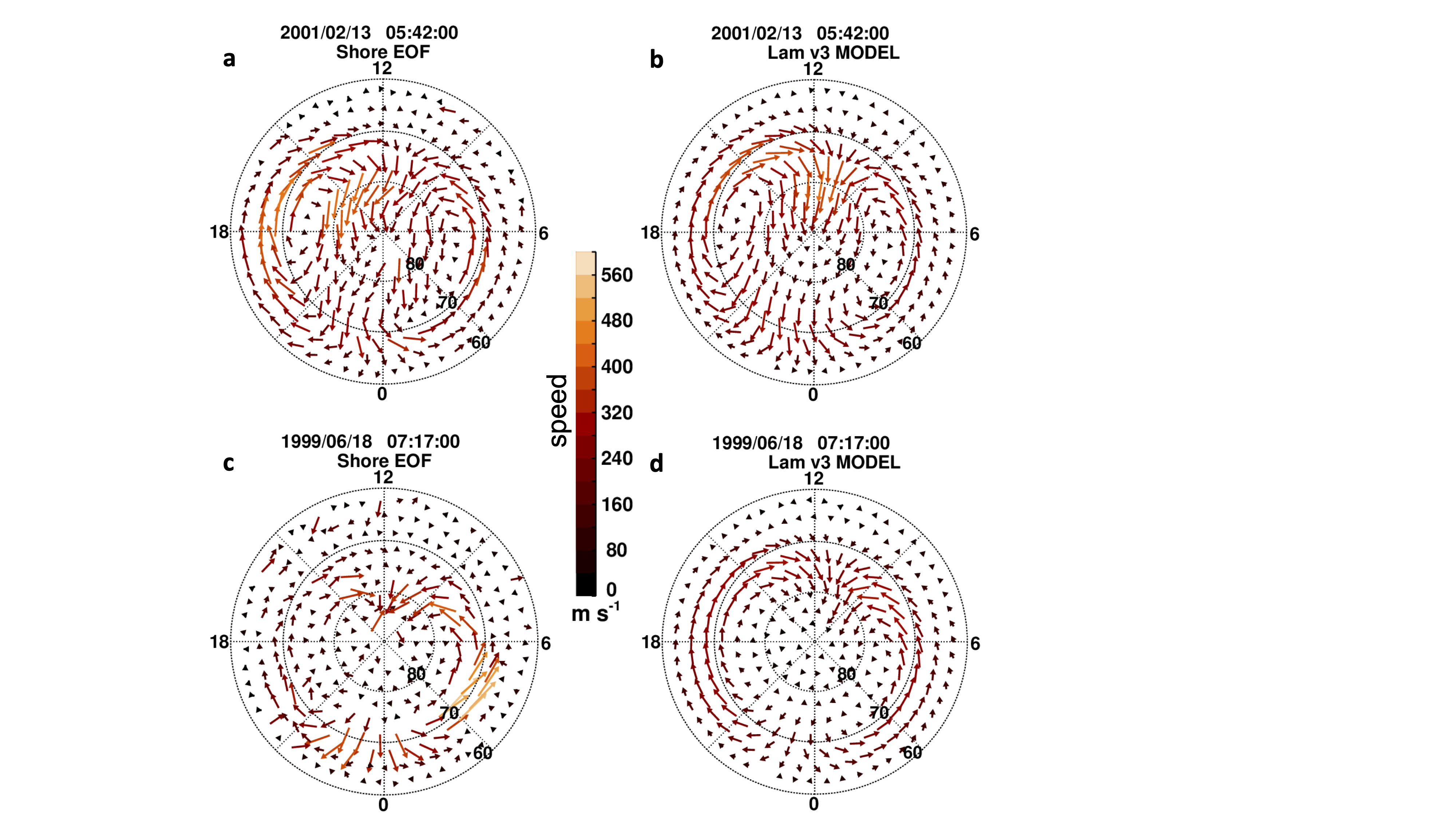MIST
Magnetosphere, Ionosphere and Solar-Terrestrial
A Model of High Latitude Ionospheric Convection derived from SuperDARN radar EOF Data
By Mai Mai Lam (British Antarctic Survey)
Variations in space weather in the ionized region of the Earth’s atmosphere (the ionosphere) can result in expansion of the atmosphere, increasing the atmospheric drag on objects, such as satellites, in the thermosphere. We aim to significantly improve the forecasting of the effects of atmospheric drag on satellites by more accurate modelling of space weather effects on the motion of ionized particles (plasma) in the ionosphere. We have developed a model of the variation in plasma motion using a small number of solar wind variables. The model was built using a solar cycle’s worth (1997 to 2008 inclusive) of 5-minute resolution Empirical Orthogonal Function (EOF) patterns derived from Super Dual Auroral Radar Network (SuperDARN) line-of-sight observations of the plasma motion in the high-latitude northern hemisphere ionosphere (Shore et al., 2021). The model is driven by four variables: (1) the interplanetary magnetic field component By, (2) the solar wind coupling parameter epsilon, (3) a trigonometric function of the day-of-year, and (4) the monthly solar radio flux at 10.7 cm (the F10.7 index). Our model is good at reproducing the original data set - if 0 indicates that there is no reproduction and 1 indicates exact reproduction, then our model scores 0.7. Data set reproduction is best around the maximum in the solar cycle and worst at solar minimum. This is mainly due to differences in the spatiotemporal data coverage between these times but possibly also due to the model’s specification of the physical processes coupling the Sun to the Earth’s ionosphere. Our model could easily be used to forecast the ionospheric electric field about 1 hour in advance, using the real-time solar wind data available from spacecraft located upstream of the Earth.

References:
Lam, M. M., Shore, R. M., Chisham, G., Freeman, M. P., Grocott, A., Walach, M.-T., & Orr, L. (2023). A model of high latitude ionospheric convection derived from SuperDARN EOF model data. Space Weather, 21, e2023SW003428. https://doi.org/10.1029/2023SW003428
Shore, R. M., Freeman, M., Chisham, G., Lam, M. M., & Breen, P. (2022). Dominant spatial and temporal patterns of horizontal ionospheric plasma velocity variation covering the northern polar region, from 1997.0 to 2009.0 - VERSION 2.0 (Version 2.0) [Dataset]. NERC EDS UK Polar Data Centre. https://doi.org/10.5285/2b9f0e9f-34ec-4467-9e02-abc771070cd9